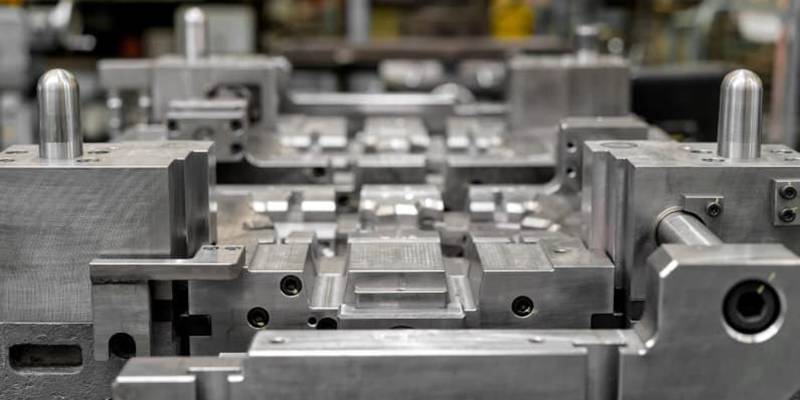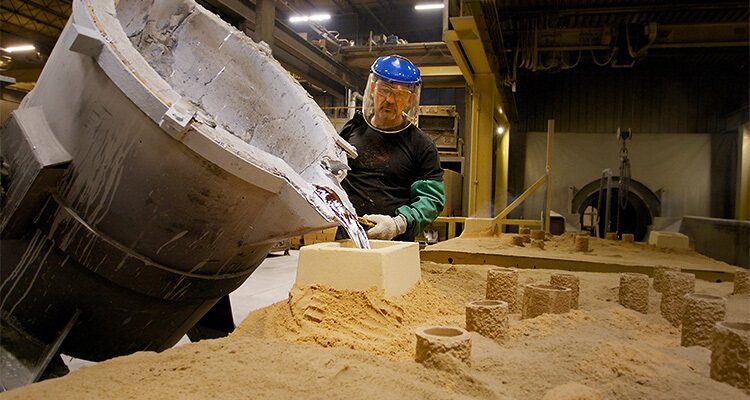Industrial Leader’s Guide to Optimizing Production Through Wisconsin Aluminum Foundry
Wiki Article

Comprehending the Process: Exactly How Aluminum Foundries Develop High-Quality Products
Aluminum foundries play a vital duty in producing top notch products via a precise procedure. It starts with melting raw aluminum, which eliminates pollutants. Later, different molding strategies shape the steel into desired forms. Accuracy during putting and solidification is vital to satisfy precise specifications. The lasts include ending up touches that boost resilience and look. As technology developments, these processes are improved even more. What advancements are shaping the future of aluminum foundries?The Melting Process: Changing Raw Aluminum
The melting process offers as a critical action in transforming raw aluminum into functional items. At first, aluminum scrap or raw ingots are positioned in a heating system where they are subjected to high temperature levels, commonly getting to around 660 degrees Celsius. This intense heat triggers the aluminum to melt, allowing impurities to rise to the surface, where they can be skimmed off.Different melting strategies, such as induction melting or gas-fired melting, might be used depending on the details needs of the shop. The choice of technique can influence energy effectiveness and metal high quality. Keeping precise temperature control is necessary to guarantee uniform melting and to prevent oxidation that can compromise the product.
Once thawed, the aluminum awaits additional handling, establishing the stage for subsequent operations that will certainly mold and mildew it right into certain forms and items. Aluminum Castings. The quality of the melting procedure directly affects the integrity of the last aluminum products produced
Molding Techniques: Shaping the Future
After the aluminum has been melted and contaminations removed, it is prepared for shaping through different molding methods. One of one of the most common approaches is sand casting, where a mold and mildew is produced from sand and a binder. This method permits complex styles and is affordable for low to medium manufacturing runs. Another popular approach is die spreading, which entails compeling molten aluminum into a steel mold under high pressure. This method leads to high precision and smooth surfaces, making it perfect for mass manufacturing.
Irreversible mold spreading is additionally utilized, utilizing recyclable mold and mildews that boost dimensional precision and surface area finish. Each molding method uses special benefits, permitting foundries to tailor their procedures based upon item specs and manufacturing volume. By picking the suitable method, aluminum foundries can ensure superior top quality and efficiency in their end products, solidifying their function in numerous markets.
Putting and Solidification: The Art of Casting
Pouring molten aluminum right into molds notes an important phase in the casting procedure, where accuracy and timing are vital - Aluminum Foundry. The foundry team must carefully control the temperature of the aluminum to guarantee excellent fluidity, preventing flaws such as porosity or cool shuts. As the steel is put, it moves right into the ins and outs of the mold and mildew, filling every cavity to produce the wanted formSolidification begins promptly as the liquified aluminum alters and cools down to a solid state. This phase is affected by numerous variables, including the mold material, density, and ambient temperature. The cooling rate needs to be handled to prevent anxiety fractures or bending in the ended up item.
Once solidified, the aluminum takes on the precise measurements and qualities of the mold, setting the phase for succeeding handling. This pouring and solidification process exhibits the delicate equilibrium of art and scientific research in aluminum casting, crucial for creating high-quality items.
Ending Up Touches: Guaranteeing High Quality and Accuracy
Guaranteeing top quality and precision in aluminum products needs careful attention to detail during the finishing procedure. This phase includes different techniques targeted at enhancing the surface area qualities and dimensional accuracy of the actors parts. Common approaches consist of machining, surface area therapy, and sprucing up. Machining corrects any kind of dimensional disparities and achieves the desired resistances, while surface area treatments, such as anodizing or powder finishing, supply look here corrosion resistance and boost aesthetic allure.Sprucing up eliminates surface blemishes, causing a smooth finish that fulfills stringent specs. Quality assurance is extremely important; each finished item undergoes strenuous examination to recognize any type of issues. Advanced determining tools, like coordinate gauging makers (CMM), are often employed to guarantee compliance with design specs. Additionally, proficient professionals play an important function, bringing experience and experience to determine concerns that makers may overlook. This detailed completing process inevitably assures that the aluminum items fulfill customer assumptions for high quality and performance.
Developments in Aluminum Foundry Modern Technology
The quest of quality and precision in aluminum products has actually led to substantial innovations in foundry modern technology. Advancements such as robotic automation have structured processes, improving effectiveness and lowering human error. These robots are now capable of executing complex tasks, including precise mold handling and material putting, which assures regular item quality.Furthermore, the combination of computer system mathematical control (CNC) machines has actually revolutionized machining operations, permitting detailed styles and tighter resistances. Advanced simulation software program promotes better process planning by anticipating prospective defects and optimizing steel circulation. Moreover, the fostering of ecologically friendly techniques, such as reusing aluminum scrap and utilizing low-emission heaters, has improved sustainability in the industry.

Frequently Asked Questions
What Sorts Of Aluminum Alloys Are Generally Used in Foundries?
Typically utilized aluminum alloys in foundries include 356, 319, and 413. These alloys are understood for their superb spreading properties, mechanical stamina, and resistance to corrosion, making them ideal for a variety of applications.Exactly How Do Foundries Make Certain Environmental Sustainability in Their Processes?
Shops apply ecological sustainability by reusing aluminum scrap, optimizing power performance, lowering emissions, utilizing eco-friendly products, and sticking to regulatory requirements, thus minimizing their eco-friendly impact while keeping production quality and performance.What Precaution Are Applied in Aluminum Foundries?
Aluminum foundries execute various precaution, consisting of personal safety tools, ventilation systems, routine safety and security training, emergency situation reaction methods, and equipment upkeep checks. These practices intend to minimize threats and assure the well-being of all workers entailed.Look At This
Just How Do Factories Deal With Issues in Cast Products?
Shops attend to problems in actors items by utilizing rigorous inspection methods, consisting of visual checks and non-destructive testing. When defects are identified, they might remodel or ditch products, making sure adherence to quality criteria and client requirements.What Is the Regular Preparation for Aluminum Spreading Projects?
The common preparation for aluminum casting projects ranges from a couple of weeks to a number of months. Elements influencing this timeline include style complexity, production quantity, and the availability of products, which differ significantly throughout various foundries.Aluminum foundries play an important duty in creating premium products via a careful procedure. Wisconsin Aluminum Foundry. The factory team should carefully control the temperature level of the aluminum to guarantee excellent fluidness, avoiding defects such as porosity or chilly shuts. The pursuit of high quality and precision in aluminum products has actually led to substantial advancements in shop technology. Typically utilized aluminum alloys in foundries consist of 356, 319, and 413. Aluminum foundries implement numerous safety procedures, consisting of individual protective tools, air flow systems, regular safety and security training, emergency situation feedback procedures, and equipment maintenance checks
Report this wiki page